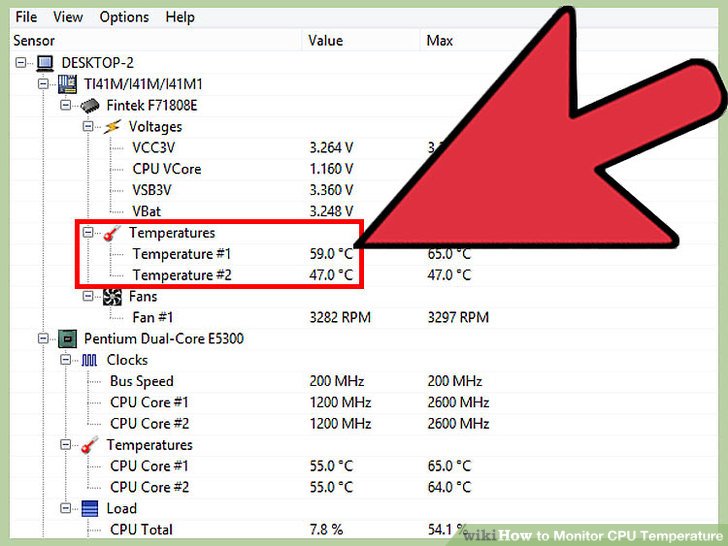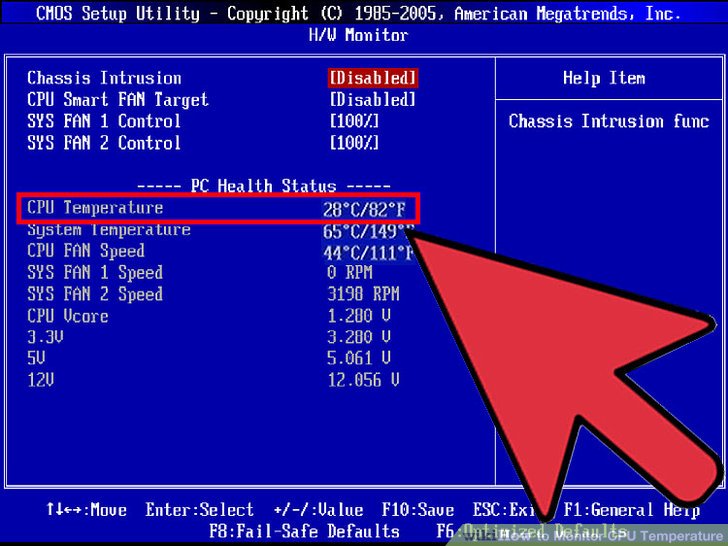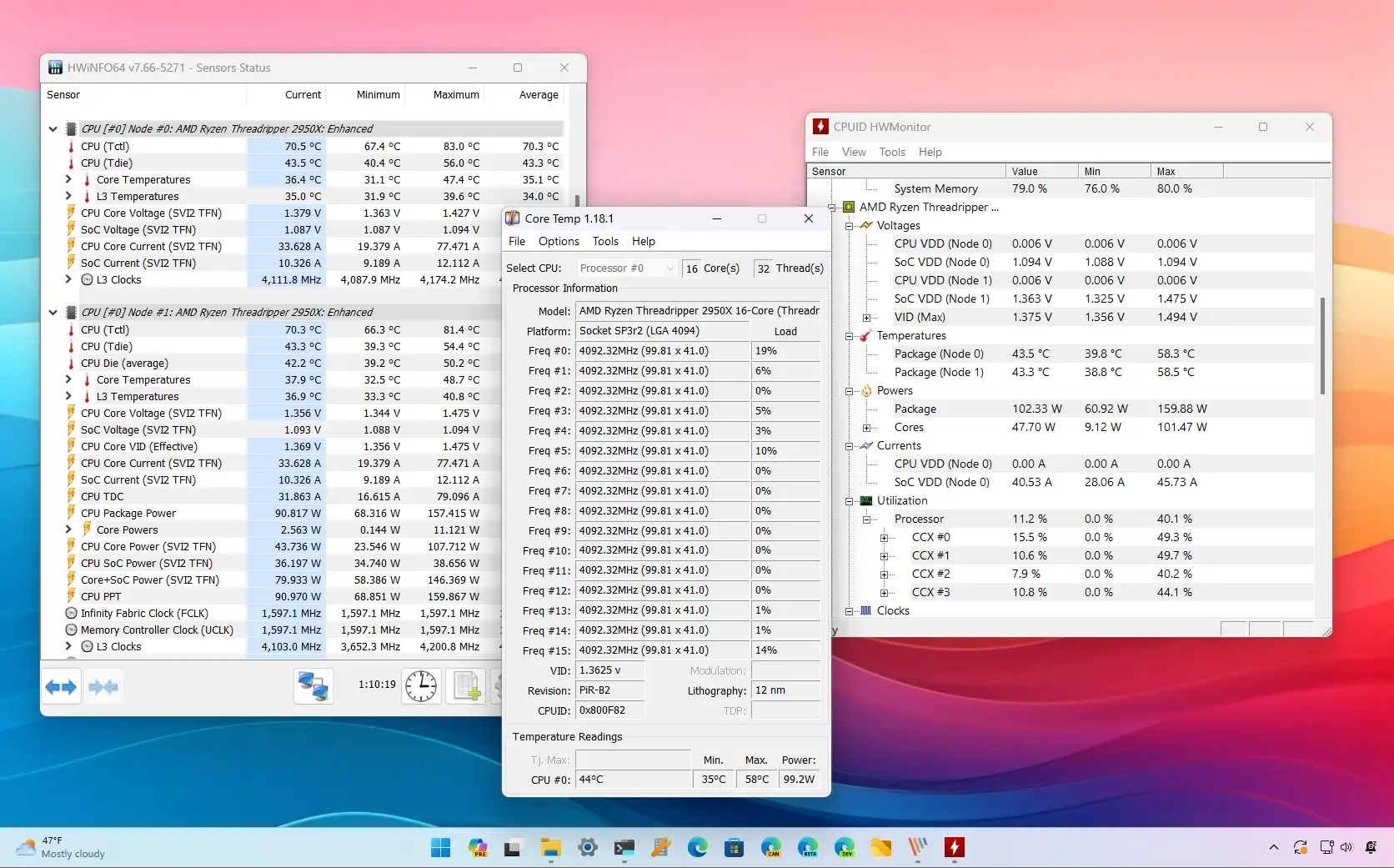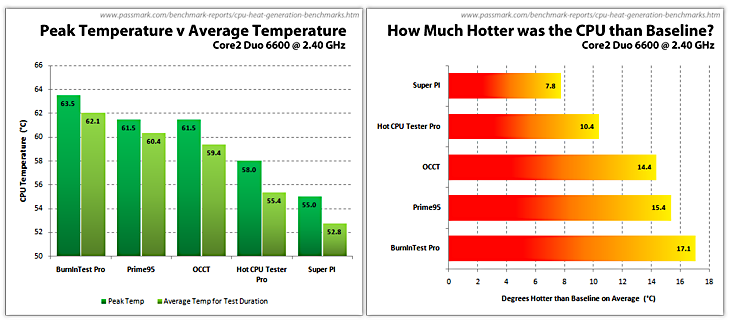Check Your CPU Temperature in Minutes

Monitoring the temperature of your central processing unit (CPU) is an essential task for any computer enthusiast or user aiming to maintain optimal performance and prevent potential damage. In this comprehensive guide, we will delve into the importance of CPU temperature monitoring, explore various methods to check it, and provide you with the knowledge to ensure your system runs smoothly and efficiently.
Understanding CPU Temperature

The CPU, often referred to as the brain of your computer, generates heat as it processes data and executes instructions. While modern processors are designed to handle heat efficiently, excessive temperatures can lead to thermal throttling, reduced performance, and even permanent damage. Monitoring CPU temperature allows you to identify potential issues, optimize cooling solutions, and ensure your system operates within safe limits.
Methods to Check CPU Temperature

There are several methods to check the temperature of your CPU, ranging from built-in system tools to third-party software. Let’s explore some of the most common and effective approaches:
Method 1: Using BIOS/UEFI Settings
One of the simplest ways to check your CPU temperature is by accessing your computer’s BIOS or UEFI settings. During the boot-up process, enter the BIOS/UEFI menu by pressing the designated key (often F2, F10, or Del) repeatedly until the setup screen appears. Navigate to the Hardware Monitor or System Health section, where you will find real-time temperature readings for your CPU.
Method 2: Monitoring with Windows Task Manager
If you’re a Windows user, the Task Manager provides a quick and convenient way to monitor CPU temperature. Press Ctrl + Shift + Esc to open the Task Manager, and then switch to the Performance tab. Here, you will find a dedicated section for CPU usage and temperature. This method offers a real-time overview of your CPU’s health and performance.
Method 3: Utilizing Third-Party Software
Several third-party applications are available that offer advanced CPU temperature monitoring features. These tools often provide detailed insights, customizable alerts, and historical data analysis. Some popular options include:
- HWMonitor: A lightweight and user-friendly application that displays real-time temperature readings for various hardware components, including the CPU.
- Open Hardware Monitor: An open-source tool that monitors temperatures, voltages, fan speeds, and other vital system parameters. It supports multiple CPU architectures and provides extensive data visualization.
- Core Temp: Focused primarily on CPU temperature monitoring, Core Temp offers precise readings and supports advanced features like temperature offset adjustments.
Method 4: Checking CPU Temperature with Linux Tools
For Linux users, command-line utilities and graphical tools are available to monitor CPU temperature. Here are a few commonly used options:
- lm-sensors: A powerful command-line tool that retrieves temperature, fan speed, and voltage information from various hardware sensors. It requires initial configuration to detect supported sensors.
- psensor: A graphical interface that displays real-time temperature readings and allows users to set alerts for specific temperature thresholds.
- hddtemp: While primarily designed for hard drive temperature monitoring, hddtemp can also display CPU temperature readings on supported systems.
Interpreting CPU Temperature Readings
Understanding the temperature readings is crucial to determining the health of your CPU. Different processors have varying temperature thresholds and optimal ranges. Generally, temperatures below 60°C (140°F) are considered safe for most CPUs during regular use. However, during intense tasks like gaming or rendering, temperatures may exceed this range without causing immediate concern.
It's important to note that each CPU model has its own recommended temperature limits. Refer to your processor's specifications or consult online resources to determine the safe temperature range for your specific CPU.
Factors Affecting CPU Temperature
- Cooling Solutions: The efficiency of your cooling system, whether it’s an air cooler or a liquid cooling setup, plays a significant role in maintaining optimal CPU temperatures.
- Workload: The type and intensity of tasks your CPU is performing directly impact its temperature. Heavy workloads, such as gaming or video editing, generate more heat than lighter tasks like web browsing.
- Ambient Temperature: The temperature of your surroundings can affect your CPU’s performance. Ensure your computer is placed in a well-ventilated area, away from direct sunlight or other heat sources.
Optimizing CPU Temperature
If you find that your CPU temperatures are consistently high, there are several steps you can take to optimize cooling and reduce thermal stress:
- Clean Your Computer: Dust buildup can restrict airflow and reduce the effectiveness of cooling systems. Regularly clean your computer's interior, paying close attention to fans and heat sinks.
- Upgrade Your Cooling Solution: Consider upgrading to a more efficient cooling system, such as a high-performance air cooler or a liquid cooling setup, especially if you frequently engage in demanding tasks.
- Manage Power Settings: Adjust your power settings to optimize performance and reduce unnecessary heat generation. Tools like Intel's Extreme Tuning Utility (XTU) or AMD's Ryzen Master can help fine-tune power and temperature limits.
- Consider Overclocking Carefully: Overclocking your CPU can lead to higher temperatures. If you choose to overclock, ensure you have adequate cooling and monitor temperatures closely to prevent overheating.
Conclusion

Monitoring your CPU temperature is a crucial aspect of maintaining a healthy and reliable computer system. By utilizing the methods outlined in this guide, you can easily check your CPU temperature and take necessary steps to optimize cooling and performance. Remember to stay vigilant, especially during intense workloads, and ensure your CPU operates within safe temperature limits to prevent potential damage and ensure a long-lasting computing experience.
How often should I check my CPU temperature?
+It’s recommended to check your CPU temperature periodically, especially if you notice any performance issues or increased system noise. Regular monitoring can help identify potential overheating problems and allow you to take preventive measures.
What is considered an acceptable CPU temperature range?
+The acceptable temperature range depends on your CPU model and its specifications. As a general guideline, temperatures below 60°C (140°F) during regular use are considered safe. However, during intense tasks, temperatures may exceed this range without causing immediate concern.
Can high CPU temperatures cause permanent damage?
+Prolonged exposure to high temperatures can lead to thermal throttling, which reduces performance to prevent overheating. In extreme cases, if the CPU reaches critical temperatures, it may suffer permanent damage. Regular monitoring and proper cooling are essential to prevent such scenarios.



